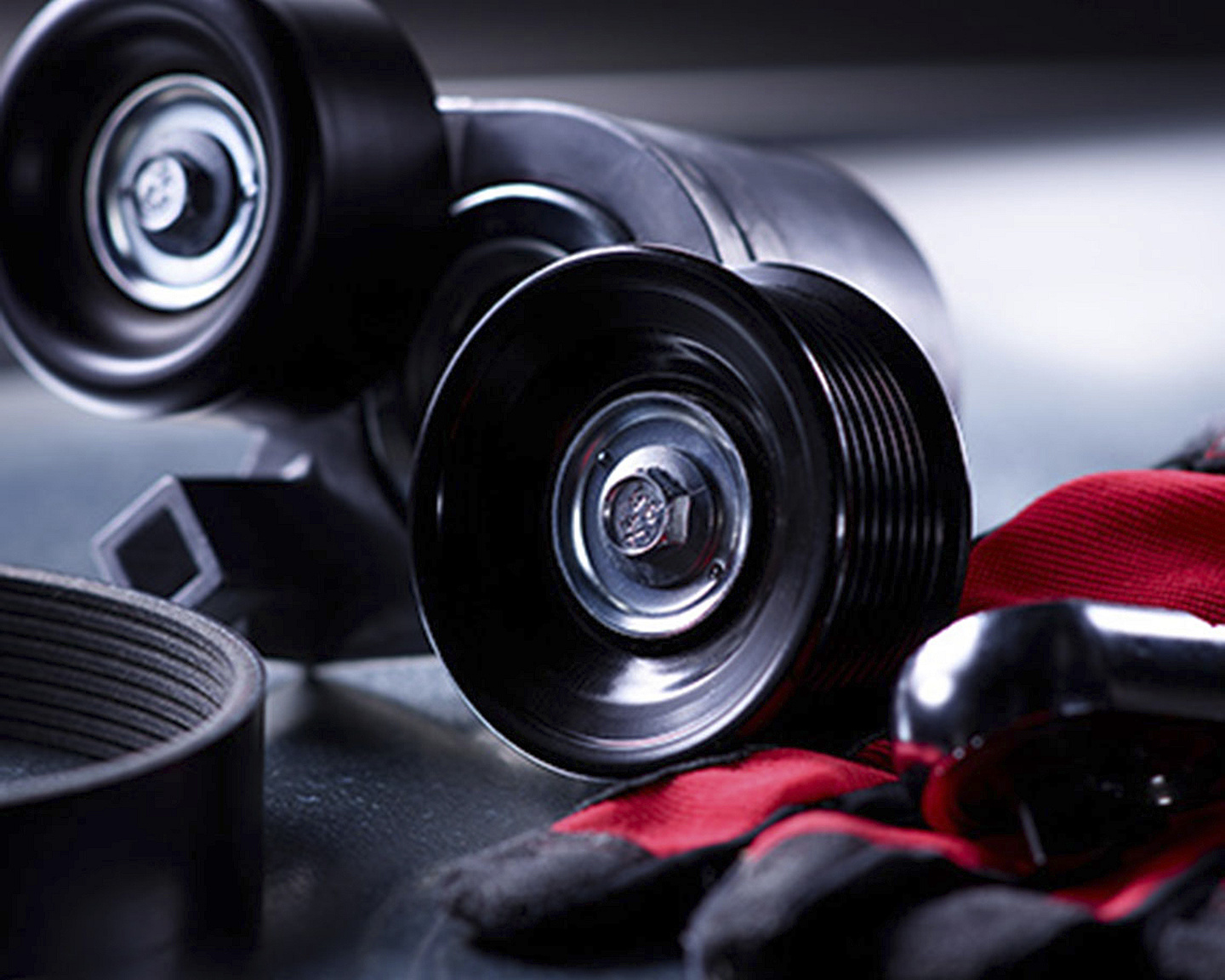EPDM (ethylene propylene diene monomer) rubber offers long lasting service life and durable performance to your vehicle belt drive systems, but unlike older rubber belts, they don’t always show wear with traditional signs of visual damage and loud belt noise.
If we can’t see it or hear it, how do we identify EPDM belt wear?
Think of EPDM belt wear the way you think of tire wear. After many miles of running on the road, a tire’s tread gradually wears down. Over time, belts experience a similar loss in material or rib wear. When this happens, a belt loses its ability to grip or function properly – it can slip – which puts a strain on other components within your engine, causing them to malfunction and potentially fail. Although not always the case with EPDM belts, noise is often your first and most obvious clue that your belt and other system components should be replaced.
When it comes to inspection and repair, think I-60/R-90
As a best practice, we always advise technicians and vehicle owners to Be System Smart by knowing the Car Care Council’s recommended service interval schedule. Start inspecting the serpentine system at 60K miles, and replace worn components by 90K miles or as advised by the manufacturer. An easy way to remember this recommended interval is I-60/R-90.
Tech Tip #1: Belt Inspection Changes
With traditional Chloroprene (neoprene) serpentine belts, standard diagnostics called for replacement of the belt if it showed three cracks in a three inch section. However, today’s EPDM belts are much more resistant to cracking, since they can run up to 100,000 miles or beyond without visual cracks - despite the belt being worn to near failure. This resilient material quality makes EPDM belts more durable than their chloroprene counterparts, but also significantly harder to conduct a visual belt wear diagnosis.
A far better indicator EPDM belt wear is material loss on the belt ribs.
Serpentine belt drives do not work in an enclosed environment, and are frequently exposed to sand, rocks, salt, water and other engine fluids. These contaminants, along with slight misalignments, result in accelerated wear of the rubber rib surface. Once serpentine belts lose rib material, the belt is susceptible to failure modes defined by changes in the belt rib profile.
Most commonly, material loss alters the belt fit to the pulley. Serpentine belts are designed to allow clearance between the ribs and the pulley sheaves (valleys). When material loss occurs, the clearance is reduced; thus, eliminating a way for water and debris to be passed through the pulley. This can result in belt slip as a result of hydroplaning.
To summarize this wear process:
- Over time, belt ribs lose materia
- The space between the ribs increases
- The pulley sheave will eventually contact the belt valley, causing belt slip and accelerated
- Hydroplaning (like a tire on a wet road) can result
Today's technicians need to look at the entire accessory drive system to help diagnose belt wear: from the belt/tensioner/pulley performance, to vehicle mileage, to the operation of other system components. For example, belt wear can lead to intermittent alternator performance as indicated by a persistent check engine light, inconsistent power steering performance, and/or poor A/C system performance. All are signs of belt slip caused by wear or loss of tension.
Conducting your 60k mile belt check
The informed technician needs to consider belt issues every time a serpentine system component is replaced, and every technician’s best practice is to begin checking belts and other system components at 60,000 miles. Ensure that the pulleys can free-wheel and spin, the belt doesn’t have excessive wear, and the tensioner rotates through its full range of motion. You can also instantly and easily check belt wear with Gates belt wear gauge tool .To avoid more costly component failures, replace system components at 90,000 miles, or as recommended by the vehicle manufacturer.
Tech Tip #2: Belt Performance Directly Affects Other Components
The slightest belt material loss means more for a car's performance than you might think. As little as 5% rib material loss due to surface wear can negatively affect belt performance, and 10% belt slippage can noticeably affect the vehicle’s drivability. For example, belt slip could reduce alternator output, which is particularly impactful on very cold days when system charging and other factors may compromise performance.
The graph below shows the effect on the system when a new alternator is installed with an old belt and tensioner. The average automatic belt tensioner arm will cycle over one billion times for every 100,000 vehicle miles. By only changing one of the system components, system vibration increases dramatically. This vibration increase may not be felt or heard. Excessive arm vibration results in belt noise, accelerated bearing wear to accessory drive components, and premature system failure. Internal components in the tensioner can fail, causing stress on the belt and other accessory components. Performance of the new component can also be compromised, resulting in additional cost to re-diagnose and repair the problem.
Accessory Drive Vibration with New/Worn Parts
1. Arm vibration is minimized with a new alternator, belt, and tensioner
2. Vehicles with 90,000+ mile components are prone to increased vibration from the worn alternator, belt, and tensioner
3. When replacing an alternator without replacing the belt and tensioner, arm vibration is increased as the worn belt and tensioner do not dampen the new component effectively
Tech Tip #3: The Role of the Automatic Tensioner
The two primary roles of the automatic belt tensioner are to: 1) apply the correct amount of tension to the serpentine belt as it transfers torque from the crankshaft to the system accessories and 2) smooth out crankshaft vibration associated with the transfer of power.
A common misconception is that automatic belt tensioners last the lifetime of the vehicle, when in actuality, they contain internal components that eventually wear out. A tensioner is a relatively inexpensive part to replace and can help protect other components, such as the water pump, alternator, and A/C compressor, from undue stress and premature failure. Pulley bearing failures due to excessive heat, vibration, or improper belt tension is among the leading causes of alternator warranty returns. As the tensioner wears out, it creates an uneven amount of tension and will wear on the edges of the belt prematurely, resulting in tensioner pulley misalignment. Belt slippage and even small amounts of misalignment can cause diminished system component output or even total component failure.
Diagnosing the system tensioner
An essential best practice for a technician considering belt replacement, or any other component within the serpentine system, is a diagnostic check of the tensioner. While the engine is running with the air conditioning on, check the tensioner arm for excessive vibration. If the tensioner arm vibration can be seen with the naked eye, then the vehicle needs a new tensioner. With the engine off, also inspect the pulley surface and spin the pulley to check the bearing. Make sure there’s no resistance, as this will confirm the bearing is operating properly.
Remember, any system is only as good as its weakest link - and the tensioner is a very critical link in the accessory belt drive system. If you replace the tensioner, we recommend replacing the other system components to ensure a complete system repair. Be System Smart by being aware of the Car Care Council’s recommendation. Start inspecting the serpentine system at 60K miles, and replace system components by 90K miles, or as advised by the manufacturer.




